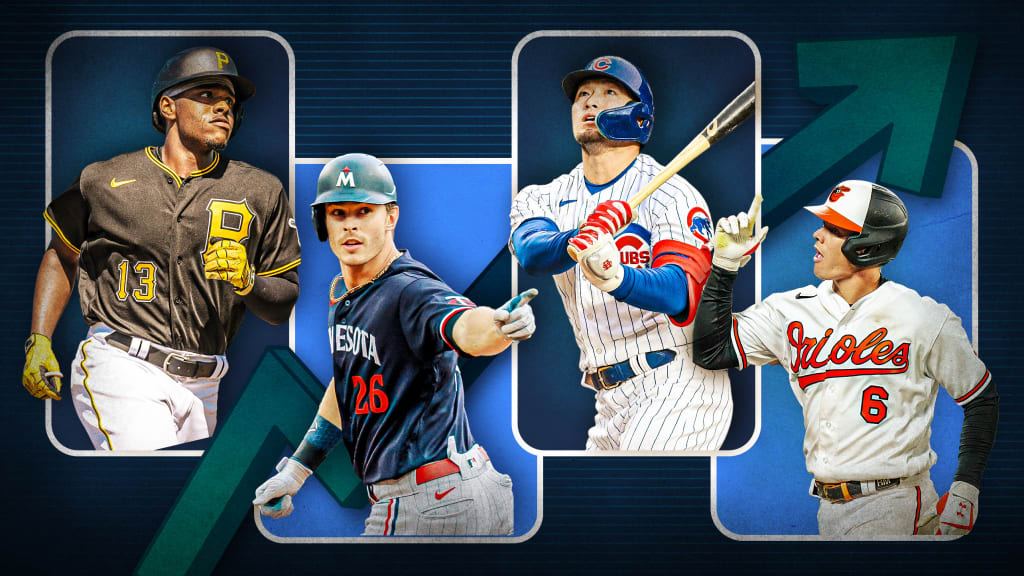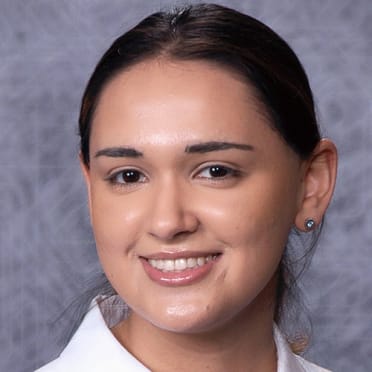
Getting off to a slow start may not be the end of the world, but it's not exactly ideal, either. No player wants to be forced to claw back from posting a sub-.200 average in April, or carrying a 5.00 ERA into the All-Star break, nor does anyone really want the consolation prize that is having an impressive line "given how poorly it started."
That said, pretty much every player, sooner or later, is going to turn in an underwhelming first half, and a lot of times that can turn into an underwhelming year. The ones that don't -- those cases where a midseason adjustment works in a player's favor, a lingering injury finally heals or their luck changes for the better -- are worth noting, especially in the ramp up to a new season.
We're there again, so let's have a look. Here are nine second-half stars looking to carry that momentum into 2024.
Seiya Suzuki, RF, Cubs
1st half: .748 OPS | 2nd half: .938 OPS
Suzuki played just 41 games for the Cubs in 2022 before he was sidelined with a sprained left ring finger that cost him more than a month. He then missed most of Spring Training and the first two weeks of the 2023 season with a left oblique strain. Given that, it wasn't hugely surprising that he didn't really find his rhythm until July.
You'd hardly call Suzuki's first half poor, but he found another gear after the All-Star break and only got better with time. His improvements culminated in a red-hot September during which he hit .370 with nine doubles, two triples and seven home runs (matching his first-half total) in 28 games. Don't be so quick to dismiss that as a small sample size, either -- the numbers Suzuki put up in the second half look quite a lot like his career NPB numbers (.315/.414/.570, .984 OPS).
Ke'Bryan Hayes, 3B, Pirates
1st half: .683 OPS | 2nd half: .874 OPS
Hayes is already one of the best defensive third basemen in baseball -- has been, really, since he debuted in 2020 -- but his bat has lagged behind his glove to this point. Recurring injuries haven't helped much, either, and his 2023 season went off course when he was placed on the injured list with back inflammation from June 28 to July 6, played one game, then landed back on the IL with the same injury through Aug. 1.
Abbreviated or not, though, Hayes' second half was pretty promising. No longer hampered by the back injury, he had some more power behind his swing, posting a 50.6% post-break hard-hit rate (up 3.9 points from the first half) and hitting 10 home runs in 49 games, doubling his total of five in 75 first-half games. That he took home his first Gold Glove Award this past season is a big deal, but keep an eye on his bat in 2024.
Max Kepler, RF, Twins
1st half: .688 OPS | 2nd half: .926 OPS
Kepler has spent a lot of his time in the Majors just trying to get back on the field, and 2023 didn't start much better for him. He was sidelined with right patellar tendinitis in April and then a left hamstring strain in May. When he was in the lineup in the first half, it was pretty clear from his diminished power and uptick in strikeouts that he still didn't really have his legs under him.
Fortunately for both Kepler and the Twins, it was really just a matter of time. Plagued mainly by ground balls in the first half, Kepler raised his combined line-drive/fly-ball rate by 6.7 percentage points post-break. That, along with the 7.6-point boost in his hard-hit rate, turned into the best results Kepler has ever had at the plate in the Majors. In all, even with the slow start, he set new career highs in hard-hit rate (47.9%), barrel rate (12.2%), xBA (.271) and xSLG (.503) -- all good signs heading into his final season before free agency.
Ryan Mountcastle, 1B/DH, Orioles
1st half: .691 OPS | 2nd half: .893 OPS
At his best, Mountcastle takes his hacks. He ended the 2022 season with the second-highest swing rate among qualifying hitters (56.2%). But through June 2023, he was working on a 57.7% swing rate and career-worst 41.4% chase rate. Then the Orioles placed him on the injured list because he was experiencing vertigo, which went a long way toward explaining what had been going wrong.
Mountcastle's season is pretty perfect for this list -- he got just one more first-half at-bat after his IL stint, so his return is almost entirely captured by those excellent second-half stats. His chase rate was 6.1 points lower after the All-Star break (35.3%). It's only one element of his game, but given his power potential, the increased discipline he showed late last season is huge. He hit 33 home runs in his first full season in 2021, but 2024 could be the year he steps up as a centerpiece of the Orioles' talented young lineup.
MJ Melendez, OF, Royals
1st half: .622 OPS | 2nd half: .836 OPS
Melendez has punishing power -- he ranked in the 96th percentile of qualifying big leaguers with an average exit velocity of 93.2 mph in 2023 -- but he also struck out 103 times in 84 first-half games, in keeping with a larger career trend.
This isn't the case for every player on the list, but Melendez's resurgence actually does have everything to do with the All-Star break, which he spent in the batting cage retooling his stance to correct an issue with his timing. Those adjustments helped him take a huge step forward in his development in the second half, when his chase, whiff and strikeout rates all dropped noticeably. Melendez¡¯s improvement with the bat is especially important, given that he is now primarily an outfielder, after the Royals moved him out from behind the plate early last season.
Jameson Taillon, SP, Cubs
1st half: 6.15 ERA | 2nd half: 3.70 ERA
After an injury-plagued few seasons, Taillon made 29 starts in 2021 and a full 32 in 2022. He pitched well but never exactly stopped feeling like a work in progress. That carried over into 2023. His first month with the Cubs, during which he (along with half the league) was developing a sweeper, was interrupted for three weeks by a left groin strain. He lost his feel for his delivery, and as if to add insult to injury, his defense recorded -10 Outs Above Average behind him on the year, ranking near the bottom of the Majors. His first-half FIP (4.90) definitely doesn't sparkle, but it'd have been preferable to his ERA.
Taillon has since discussed some of the adjustments, both mechanical and mental, that helped him turn things around after his ERA sat near 7.00 entering his best start of the season, on July 7 against the Yankees (eight scoreless innings, one hit). He saw notable gains in his zone and whiff rates and strikeout-to-walk ratio after that point, perhaps setting him up for a better Year 2 in Chicago.
Freddy Peralta, SP, Brewers
1st half: 4.70 ERA | 2nd half: 2.81 ERA
This one we can probably chalk up to getting back in the groove. Peralta was enjoying a breakout 2021 season when he developed inflammation in his right shoulder, which recurred in 2022. Between that and a right lat strain, he never really looked sharp in the 18 appearances (17 starts) he did make in 2022. He came back stronger last season, but he was still missing the four-seamer that had defined his previous success. The pitch that generated a 35.5% strikeout rate two years earlier had dipped to just 24.9% in the first half of 2023.
Fortunately for him -- and the Brewers, who rode their rotation to the postseason -- he just needed time to find it again. His K% on four-seamers was up to 41.5% after the All-Star break and he notched the second-most strikeouts in the second half (103 in 73 2/3 innings, trailing only Spencer Strider's 115). Most pitchers don't need swings-and-misses out of their fastballs. Peralta does, and assuming he's healthy, his last three months of work in 2023 bode well for 2024.
Robert Stephenson, RP, Angels
1st half: 4.45 ERA | 2nd half: 1.50 ERA
The Rays sent Minor League infielder Alika Williams to the Pirates in exchange for a struggling Stephenson on June 2 and, as they have so many times before, helped a pitcher become the best version of himself. Stephenson debuted with an excellent slider. His problem, for years, has been his four-seam fastball. (Case in point: In 2023, it averaged 96.8 mph, but opponents hit .300 with a .575 SLG against it.)
Stephenson didn't entirely scrap the four-seamer with Tampa Bay, but Rays pitching coach Kyle Snyder helped him make some long-awaited adjustments to his best pitch. That worked out, to put it mildly. His new and improved iteration is so different it's not actually, technically, even a slider anymore. Given its much tighter break, it's now classified as a cutter by Statcast, but Stephenson does still refer to it as his slider. Whatever you want to call it, it was crazy good. By September, he was throwing it over 70% of the time, and opposing hitters never figured out what to do with it, going 8-for-79 (.101) with a 59.9% whiff rate against it overall.
That pitch is so potent that it helped him earn a three-year contract from the Angels, according to a report. Now we¡¯ll see if he can hang onto it with his new club.
Pierce Johnson, RP, Braves
1st half: 6.49 ERA | 2nd half: 0.96 ERA
Johnson did spend the first half with the Rockies, and calling Coors Field home definitely had something to do with his results. It¡¯s true that through July 24, when he was traded to the Braves, he had a 7.23 home ERA against a 4.11 ERA on the road. It¡¯s never a bad idea to get a struggling pitcher out of Denver, but there's more to it than that.
With the Rockies, Johnson generated a mere 28.6% ground ball rate (well below the MLB average of 43.1%) and issued nearly six walks per nine innings. The Braves helped change his fortunes with a new gameplan and pretty straightforward advice: Lean on your best pitch, and pitch to contact. Johnson upped his curveball usage from 53.0% in Colorado to 71.6% in Atlanta, nearly doubled his groundball rate (55.8%) and dramatically slashed his walk rate (1.9 BB/9).
The only question now is whether he can carry that success through a full season. The Braves certainly think he can, re-signing Johnson to a two-year, $14.25 million deal this offseason.
